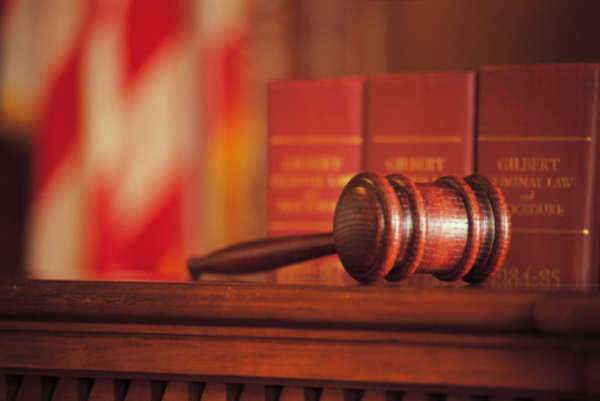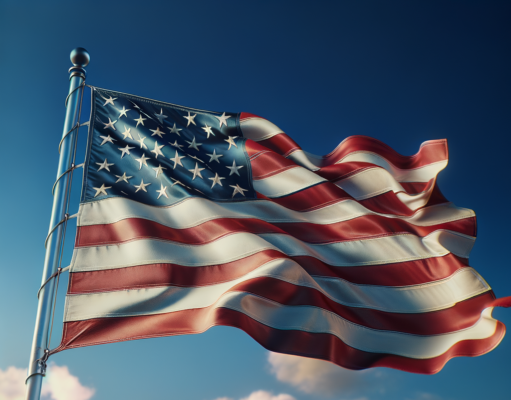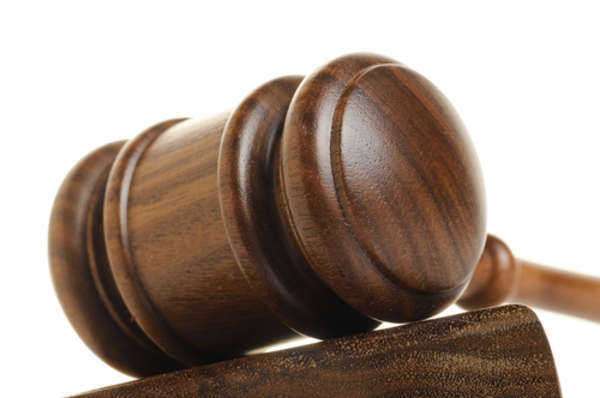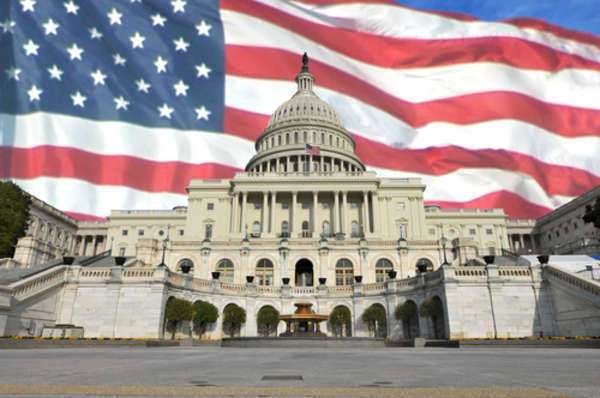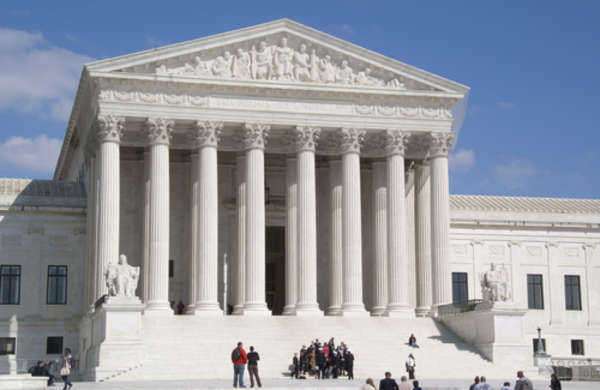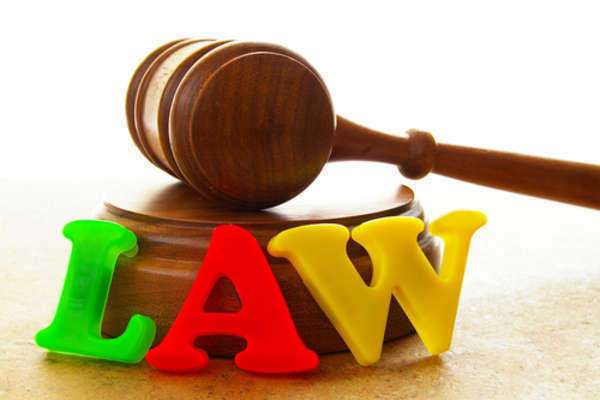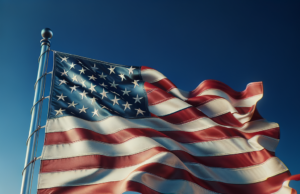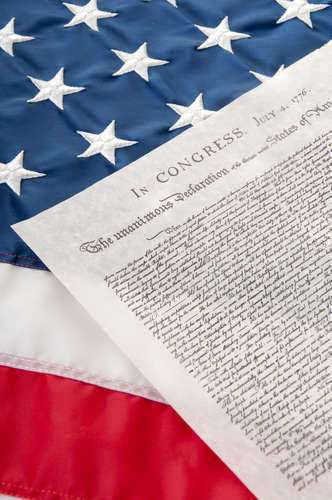
The Fourth Amendment: Safeguarding Privacy in a Digital Age
Introduction
The Fourth Amendment to the United States Constitution, often hailed as a cornerstone of individual liberty, serves as a bulwark against unreasonable searches and seizures by the government. Written by James Madison and adopted as part of the Bill of Rights in 1791, this amendment has evolved over time to address modern challenges, particularly in the digital age. In this article, we will explore the historical context of the Fourth Amendment, its core principles, landmark Supreme Court decisions, and its relevance in the context of contemporary issues such as digital surveillance and privacy concerns. Our examination will rely on government resources and authoritative legal interpretations to provide a comprehensive understanding of this crucial constitutional provision.
The Historical Context of the Fourth Amendment
To fully grasp the significance of the Fourth Amendment, it is essential to understand the historical backdrop against which it was drafted. The American colonies had endured unwarranted searches and seizures by British authorities, who used general warrants known as “writs of assistance” to search homes and businesses without specific cause or individualized suspicion. These abuses of power left a profound impact on the Founding Fathers, who were determined to ensure that such violations of privacy would not be repeated in the newly formed United States.
The Text of the Fourth Amendment
The Fourth Amendment reads: “The right of the people to be secure in their persons, houses, papers, and effects, against unreasonable searches and seizures, shall not be violated, and no Warrants shall issue, but upon probable cause, supported by Oath or affirmation, and particularly describing the place to be searched, and the persons or things to be seized.”
This succinct yet powerful statement lays down several fundamental principles that guide its interpretation:
- Protection against Unreasonable Searches and Seizures: The Fourth Amendment primarily serves to protect individuals from government intrusion into their personal lives, property, and belongings without just cause.
- Requirement of Probable Cause: Before issuing a warrant for search or seizure, the government must demonstrate probable cause, meaning there must be a reasonable basis to believe that a crime has been committed and that the items sought are related to that crime.
- Specificity: Warrants must specify the place to be searched and the items or individuals to be seized, preventing broad, indiscriminate searches.
- Oath or Affirmation: To obtain a warrant, law enforcement officials must provide sworn testimony or affirmation to a neutral magistrate, establishing the need for the warrant.
Landmark Supreme Court Decisions
Over the years, the U.S. Supreme Court has issued numerous decisions that have clarified and expanded upon the Fourth Amendment’s principles. Some of these decisions have had a profound impact on the scope and application of Fourth Amendment protections:
- Katz v. United States (1967): In this landmark case, the Court ruled that the Fourth Amendment protects people, not just places. The decision extended Fourth Amendment protections to include wiretaps and electronic surveillance, regardless of the physical location where the surveillance took place. It introduced the concept of a “reasonable expectation of privacy.”
- Terry v. Ohio (1968): The Court established the “stop and frisk” doctrine, allowing law enforcement officers to briefly detain and pat down individuals if they have a reasonable suspicion that the person may be armed and dangerous. This decision balanced the Fourth Amendment’s protections with the need for officer safety.
- United States v. Jones (2012): The Court held that attaching a GPS device to a suspect’s vehicle and tracking their movements for an extended period constituted a search under the Fourth Amendment. The decision reaffirmed the principle that physical trespass on personal property constitutes a search.
- Riley v. California (2014): In this case, the Court ruled that law enforcement officers generally need a warrant to search the digital contents of a suspect’s cell phone, recognizing the unique privacy interests in modern technology.
- Carpenter v. United States (2018): The Court held that the government’s acquisition of historical cell phone location data without a warrant violated the Fourth Amendment. The decision recognized that individuals have a reasonable expectation of privacy in their location data, even when shared with third parties.
The Fourth Amendment in the Digital Age
As technology has advanced, the Fourth Amendment’s application has been tested in new and complex ways, particularly in the realm of digital surveillance. Government agencies, including law enforcement and intelligence agencies, have sought to access digital information, such as emails, text messages, and online browsing history, raising critical questions about the balance between national security and individual privacy.
Government Surveillance Programs
One of the most prominent issues in recent years has been the revelation of government surveillance programs, notably the National Security Agency’s (NSA) bulk data collection programs. These programs involved the mass collection of telephone metadata and internet communications, raising concerns about the scope of government intrusion and the protection of individual privacy rights.
In response to these concerns, there have been legal challenges and reforms aimed at bringing government surveillance practices in line with the Fourth Amendment’s requirements. The USA FREEDOM Act of 2015, for instance, placed restrictions on the bulk collection of telecommunication metadata and introduced more transparency and oversight into government surveillance programs.
The Third-Party Doctrine
The Fourth Amendment’s application in the digital age has also been influenced by the “third-party doctrine.” This legal principle holds that individuals do not have a reasonable expectation of privacy in information they voluntarily share with third parties, such as phone companies or internet service providers. As a result, law enforcement has argued that they do not need a warrant to access this information.
However, this doctrine has faced criticism in light of technological advancements. Many argue that modern technology has changed the nature of data sharing, making it almost impossible to function in society without sharing personal information with third parties. This has prompted legal scholars and advocates to question whether the third-party doctrine is still applicable and whether it adequately protects individuals’ Fourth Amendment rights in the digital age.
Encryption and Digital Privacy
Encryption technologies have further complicated the application of the Fourth Amendment in the digital age. Strong encryption can protect the contents of digital communications from government intrusion, even with a valid warrant. This has led to debates about whether tech companies should be compelled to provide “backdoors” to allow government access to encrypted data, with concerns about both security and privacy.
The government’s attempts to compel tech companies to provide access to encrypted data have been met with resistance, as companies argue that such measures could compromise user privacy and cybersecurity. This debate underscores the ongoing tension between government surveillance efforts and individual Fourth Amendment protections.
Conclusion
The Fourth Amendment remains a crucial safeguard of individual privacy in the United States. Throughout its history, it has adapted to address new challenges, including those posed by technological advancements in the digital age. While government surveillance programs and debates over the third-party doctrine continue to test the boundaries of Fourth Amendment protections, the fundamental principles of probable cause, specificity, and protection against unreasonable searches and seizures remain paramount.
As technology continues to evolve, the courts, legislatures, and legal scholars will grapple with how to strike the appropriate balance between national security interests and individual privacy rights. The Fourth Amendment’s enduring importance lies in its ability to adapt and provide a framework for addressing these complex and ever-changing issues, ensuring that the rights of the people to be secure in their persons, houses, papers, and effects are not eroded in the face of technological progress.
The 4th Amendment and Its Implications in All US States
Alabama: Balancing Security and Privacy
In Alabama, the Fourth Amendment to the United States Constitution stands as a fundamental cornerstone of the state’s legal framework. This amendment, designed to safeguard individuals against unreasonable searches and seizures, has been integral in shaping Alabama’s legal landscape. Balancing the necessity for law enforcement to maintain public safety while respecting individual privacy rights has been an ongoing challenge. The state’s judicial system continually navigates the delicate equilibrium between security and personal freedoms, striving to uphold the tenets of the Fourth Amendment in every case.
Alaska: Safeguarding Privacy in the Last Frontier
Alaska, known for its vast landscapes and rugged individualism, holds the Fourth Amendment in high regard. The state has developed laws and regulations that align with the federal amendment, emphasizing the protection of individual privacy and rights against unwarranted intrusions. Given its unique geographical and cultural characteristics, Alaska has crafted legislation that carefully balances the needs of law enforcement with the preservation of citizens’ personal freedoms.
Arizona: Modern Challenges and the Fourth Amendment
Arizona, with its diverse population and urban landscapes, faces modern challenges in applying the Fourth Amendment. The digital age has brought about new concerns related to technology and privacy. State legislators have been actively working to address issues such as digital searches, electronic surveillance, and data protection while ensuring that the Fourth Amendment principles remain intact. Arizona’s approach serves as an example of how states can adapt to evolving societal and technological landscapes while upholding constitutional values.
Arkansas: Search and Seizure Protections in the Natural State
In Arkansas, the Fourth Amendment plays a pivotal role in shaping the state’s legal policies. The state has established laws that closely adhere to the constitutional protections against unreasonable searches and seizures. Courts in Arkansas consistently evaluate cases through the lens of the Fourth Amendment, ensuring that citizens’ rights are safeguarded even as law enforcement carries out its duties. The state’s legal framework reflects a commitment to preserving personal liberties while maintaining effective law enforcement practices.
California: Progressive Privacy Measures and Constitutional Rights
California, often at the forefront of legal innovation, has taken significant steps to enhance privacy rights within the context of the Fourth Amendment. The state has implemented comprehensive legislation that addresses digital privacy, surveillance technologies, and data breaches. As technological advancements continue to impact privacy concerns, California’s approach serves as a model for other states striving to harmonize modern challenges with traditional constitutional protections.
Colorado: Balancing Individual Liberties and Law Enforcement
Colorado’s approach to the Fourth Amendment reflects its commitment to maintaining a balanced relationship between individual liberties and law enforcement needs. The state’s laws and legal decisions emphasize the importance of obtaining proper search warrants and adhering to constitutional standards. Colorado’s commitment to upholding the Fourth Amendment underscores its dedication to safeguarding personal freedoms while ensuring public safety.
Connecticut: Historical Roots and Contemporary Application
Connecticut’s legal landscape is deeply intertwined with the historical origins of the United States Constitution. The Fourth Amendment’s protections against unreasonable searches and seizures are enshrined in the state’s legal framework, shaping how law enforcement agencies operate and interact with citizens. Connecticut’s courts frequently interpret the Fourth Amendment’s provisions to ensure that searches and seizures are carried out in compliance with constitutional standards, preserving the balance between individual rights and societal interests.
Delaware: Fourth Amendment and Law Enforcement Protocols
Delaware’s approach to the Fourth Amendment reflects its commitment to maintaining effective law enforcement while respecting individual rights. The state’s legal system emphasizes the importance of obtaining proper warrants and conducting searches within the boundaries of constitutional protections. Delaware’s jurisprudence ensures that citizens’ privacy is upheld, even as law enforcement agencies fulfill their responsibilities.
Florida: Evolving Challenges and Constitutional Principles
Florida’s legal landscape grapples with evolving challenges that test the boundaries of Fourth Amendment protections. The state’s rapid population growth and diverse demographics require a dynamic approach to balancing security needs with individual privacy rights. Florida’s courts and legislatures continually adapt to address issues such as electronic surveillance, emerging technologies, and search warrant procedures, all while adhering to the core principles of the Fourth Amendment.
Georgia: Fourth Amendment in the Peach State
Georgia’s legal system has embraced the principles of the Fourth Amendment to safeguard its citizens’ rights. The state’s approach emphasizes the importance of search warrants, probable cause, and the protection of personal privacy. Georgia’s commitment to upholding the Fourth Amendment extends to its law enforcement agencies, ensuring that searches and seizures are conducted in accordance with constitutional standards, reflecting the state’s dedication to preserving civil liberties.
Hawaii: Privacy Rights and Law Enforcement
Hawaii, often associated with its picturesque landscapes, has also taken strides in safeguarding its citizens’ privacy rights through the incorporation of the 4th Amendment. Balancing the needs of law enforcement with individual liberties, Hawaii’s legal landscape reflects the delicate nature of personal privacy protection.
Idaho: Search and Seizure Protections
Idaho, nestled in the Northwestern United States, upholds the principles of the 4th Amendment by providing its residents with strong search and seizure protections. The state’s laws emphasize the importance of obtaining warrants before searches, ensuring that citizens’ rights are respected even in the face of criminal investigations.
Illinois: Landmark Supreme Court Cases
Illinois stands as a testament to the impact of the 4th Amendment on shaping legal precedents. The state’s legal history boasts numerous landmark Supreme Court cases that have expanded and clarified search and seizure rights. These cases have significantly influenced the broader interpretation of the 4th Amendment at the national level.
Indiana: Evolving Search and Seizure Jurisprudence
Indiana’s legal system has undergone a transformative journey in interpreting the 4th Amendment. With evolving case law, the state has struck a balance between law enforcement’s investigative needs and individuals’ rights. This nuanced approach reflects the changing landscape of privacy rights and law enforcement practices.
Iowa: Automobile Searches and Privacy
Iowa’s legal framework underscores the importance of automobile searches concerning the 4th Amendment. The state’s laws and court decisions shed light on the specific rights individuals have when it comes to their vehicles, illustrating the intricate interplay between personal privacy and law enforcement powers.
Kansas: Digital Age and Privacy Concerns
In the heart of the Midwest, Kansas grapples with the intersection of the 4th Amendment and digital privacy. As technology advances, the state’s legal system addresses novel challenges, such as the protection of electronic communications and data from unreasonable searches, preserving citizens’ privacy in the digital age.
Kentucky: The Exclusionary Rule and Accountability
Kentucky’s legal landscape underscores the concept of the exclusionary rule, which deters unlawful searches by excluding illegally obtained evidence from court proceedings. This mechanism ensures accountability in law enforcement and reinforces citizens’ rights protected by the 4th Amendment.
Louisiana: Unique Cultural Factors and Privacy Rights
Louisiana’s legal approach to the 4th Amendment reflects the state’s distinctive cultural and historical factors. Balancing Creole traditions with constitutional rights, Louisiana’s courts navigate the nuances of privacy protections, exemplifying how state laws can be influenced by local customs and values.
Maine: Privacy in the Digital Age
Maine, nestled in the northeastern corner of the United States, is at the forefront of addressing privacy concerns in the digital era. The state’s legislation and legal decisions address issues like warrant requirements for digital information, highlighting the need to adapt the principles of the 4th Amendment to modern technology.
Maryland: Incorporation of Civil Liberties
Maryland’s legal landscape embodies the incorporation of civil liberties protected by the 4th Amendment. With a rich history of upholding individual rights, the state’s laws and legal decisions emphasize the importance of ensuring citizens’ privacy and curtailing government overreach in search and seizure matters.
Massachusetts: Safeguarding Privacy Rights
Massachusetts, known for its rich historical significance in the formation of the United States, holds a significant stance in upholding the principles enshrined in the Fourth Amendment. This state has long been a proponent of protecting individual privacy rights against unreasonable searches and seizures by law enforcement. With a strong legal tradition dating back to its colonial days, Massachusetts has continuously integrated the Fourth Amendment into its state laws to ensure the rights of its citizens are respected.
Michigan: Balancing Law Enforcement and Privacy
Michigan, located in the heart of the Great Lakes region, exemplifies the delicate balance between law enforcement needs and citizens’ privacy rights. The state has embraced the principles of the Fourth Amendment to establish a framework that prevents unreasonable searches and seizures, while still enabling effective law enforcement. Michigan’s legal system acknowledges the evolving nature of technology and its impact on privacy, adapting its state laws to reflect these changes and ensure citizens’ constitutional rights are upheld.
Minnesota: Evolving Perspectives on Search and Seizure
Minnesota, often referred to as the “Land of 10,000 Lakes,” has been at the forefront of evolving perspectives on search and seizure laws. The state’s legal landscape has seen shifts in interpreting the Fourth Amendment, considering factors such as technological advancements and the changing nature of privacy in the digital age. Minnesota’s commitment to safeguarding citizens’ rights while addressing contemporary challenges is reflected in its state laws that integrate the principles of the Fourth Amendment.
Mississippi: Safeguarding Individual Liberties
Mississippi, located in the southeastern region of the United States, has woven the principles of the Fourth Amendment into its legal fabric to protect individual liberties. With a history intertwined with civil rights struggles, the state recognizes the importance of preventing unwarranted intrusions into citizens’ lives. Mississippi’s state laws embody a commitment to upholding the Fourth Amendment’s protections, ensuring that citizens’ privacy remains paramount in the face of law enforcement actions.
Missouri: Adapting to Technological Advances
Missouri, often referred to as the “Show-Me State,” has shown its dedication to adapting the Fourth Amendment to the challenges posed by technological advances. The state has recognized the implications of modern technology on privacy and has incorporated this awareness into its state laws. Missouri’s legal framework reflects the need to address issues such as digital surveillance and data privacy, demonstrating a commitment to preserving citizens’ Fourth Amendment rights in an evolving world.
Montana: Preserving Privacy in Vast Landscapes
Montana, characterized by its vast landscapes and rugged beauty, places a strong emphasis on preserving individual privacy rights. The state’s commitment to upholding the Fourth Amendment is reflected in its legal approach, which aims to protect citizens from unreasonable searches and seizures. Montana’s state laws recognize the importance of ensuring that the principles of the Fourth Amendment are not compromised, even in its expansive and diverse geographical terrain.
Nebraska: Constitutional Rights and Law Enforcement
Nebraska, situated in the Great Plains region of the U.S., has established a nuanced approach to balancing constitutional rights and law enforcement needs. The state’s legal framework reflects its commitment to preventing unreasonable searches and seizures, while also recognizing the importance of effective crime prevention. Nebraska’s state laws incorporate Fourth Amendment principles in a way that acknowledges the complexity of modern law enforcement while safeguarding citizens’ individual rights.
Nevada: Navigating New Frontiers of Privacy
Nevada, known for its desert landscapes and vibrant entertainment hubs, has taken on the challenge of navigating new frontiers of privacy in the digital age. The state’s legal system recognizes the impact of technology on individual privacy and has integrated Fourth Amendment principles to address these issues. Nevada’s state laws reflect a dedication to protecting citizens from unwarranted intrusions while considering the unique challenges posed by evolving forms of surveillance.
New Hampshire: Historical Roots of Privacy Protection
New Hampshire, with its deep-rooted history in the early days of American independence, has historically valued individual privacy and civil liberties. The state’s commitment to protecting citizens from unreasonable searches and seizures is evident in its legal approach. New Hampshire’s state laws reflect the spirit of the Fourth Amendment, emphasizing the importance of respecting citizens’ privacy rights while ensuring effective law enforcement practices.
New Jersey: Contemporary Challenges and Fourth Amendment
New Jersey, situated in the northeastern corridor of the U.S., faces contemporary challenges in upholding the principles of the Fourth Amendment. The state’s legal landscape addresses issues such as digital privacy, surveillance technology, and the balance between individual rights and law enforcement needs. New Jersey’s state laws showcase a dedication to adapting Fourth Amendment principles to modern complexities, striving to preserve citizens’ privacy rights in an ever-changing world.
New Mexico: Balancing Privacy and Security
New Mexico, like other states in the United States, grapples with the intricate relationship between the Fourth Amendment and state laws. The Fourth Amendment, a crucial component of the Bill of Rights, guarantees citizens protection against unreasonable searches and seizures by law enforcement. This amendment plays a pivotal role in shaping the balance between individual privacy and government authority. In New Mexico, this balance is reflected in various state laws and regulations that seek to uphold both citizens’ rights and the state’s duty to maintain public safety.
New York: Landmark Court Decisions and Privacy Protections
New York has long been a focal point in the legal landscape of Fourth Amendment jurisprudence. The state’s court decisions have contributed significantly to shaping the interpretation and application of this amendment. Notably, New York v. Belton (1981) established the “automobile exception,” allowing police officers to search the passenger compartment of a vehicle without a warrant if they have made a lawful arrest of the vehicle’s occupant. This exception has raised debates about the extent of police authority in searches related to motor vehicles.
North Carolina: Vehicle Searches and Consent
In North Carolina, the Fourth Amendment plays a pivotal role in shaping the rights of individuals in encounters with law enforcement. The state has upheld the principle that searches and seizures must be conducted within the boundaries of the Fourth Amendment. The concept of consent is especially significant in this context, as individuals’ voluntary consent can validate a search even without a warrant. This dynamic has led to discussions about the implications of granting consent under various circumstances.
North Dakota: Electronic Surveillance and Digital Privacy
With the rapid advancement of technology, North Dakota has faced the challenge of applying Fourth Amendment principles to the digital age. The state’s laws are evolving to address issues such as electronic surveillance, digital searches, and the privacy of electronic communications. Balancing the need for law enforcement to combat cybercrime with citizens’ protection against unwarranted intrusion is a complex task that North Dakota, like many states, continues to navigate.
Ohio: Searches Incident to Arrest
Ohio’s approach to the Fourth Amendment is evident in its stance on searches incident to arrest. The state follows the federal precedent set by Chimel v. California (1969), which permits law enforcement to search the area within an arrestee’s immediate control without obtaining a warrant. This interpretation aims to ensure officers’ safety and prevent the destruction of evidence. However, debates persist about the scope of this authority and its potential impact on individual rights.
Oklahoma: Exigent Circumstances and Emergency Searches
Oklahoma’s legal landscape reflects the delicate balance between individuals’ rights and law enforcement’s duty to address urgent situations. The concept of exigent circumstances allows officers to bypass the requirement for a warrant when there is an immediate need to prevent danger or destruction of evidence. Oklahoma’s state laws outline the conditions under which such emergency searches are permissible, raising questions about the threshold for justifying warrantless intrusions.
Oregon: Privacy in the Digital Age
Oregon grapples with the challenges of protecting individual privacy in an era of rapidly evolving technology. The state’s laws are adapting to address issues such as cell phone searches, location tracking, and digital data preservation. Striking a balance between law enforcement’s investigative needs and citizens’ rights to digital privacy remains an ongoing endeavor, prompting discussions about the scope of government authority in the digital realm.
Pennsylvania: Stop and Frisk Policies
The balance between individual rights and law enforcement practices is exemplified by Pennsylvania’s approach to stop and frisk policies. The state’s laws dictate the circumstances under which officers can stop and frisk individuals for weapons. This practice has raised debates about racial profiling, civil liberties, and the boundaries of police authority. Pennsylvania’s ongoing efforts to refine these policies demonstrate the state’s commitment to upholding Fourth Amendment principles.
Rhode Island: Consent Searches and Personal Autonomy
Rhode Island’s legal landscape reflects the importance of consent in searches and seizures. The state’s laws emphasize that consent must be voluntary, informed, and unequivocal for a search to be considered lawful. This emphasis on personal autonomy aligns with the spirit of the Fourth Amendment, which seeks to protect citizens from unreasonable government intrusion. The nuances of consent and its implications for search and seizure cases continue to shape Rhode Island’s legal discourse.
South Carolina: Search Warrants and Probable Cause
South Carolina’s legal framework demonstrates a commitment to ensuring that search warrants are issued based on probable cause, as mandated by the Fourth Amendment. The state’s laws establish the criteria that must be met for a search warrant to be granted, underscoring the importance of safeguarding citizens’ rights against unwarranted intrusions. The meticulous process of obtaining search warrants is a cornerstone of South Carolina’s approach to maintaining a balance between law enforcement and individual privacy.
South Dakota: Privacy Rights and Digital Age
South Dakota, like other states, upholds the principles of the 4th Amendment, which protects citizens from unreasonable searches and seizures. In recent years, the state has faced challenges in applying this amendment to the digital age, as issues related to data privacy and electronic surveillance have come to the forefront. The evolving landscape of technology and its impact on individual privacy have prompted South Dakota to review and adapt its state laws to ensure that the 4th Amendment remains relevant and effective.
Tennessee: Balancing Law Enforcement and Civil Liberties
Tennessee’s legal system has been tasked with striking a delicate balance between law enforcement needs and the protection of civil liberties guaranteed by the 4th Amendment. The state has been at the forefront of discussions regarding stop-and-frisk practices, vehicle searches, and other law enforcement activities that involve potential infringements on citizens’ privacy rights. State laws and court decisions have aimed to establish clear guidelines to prevent unreasonable searches and seizures, while also providing law enforcement with the tools necessary to maintain public safety.
Texas: Search and Seizure in the Borderland
Given its proximity to the U.S.-Mexico border, Texas has been particularly impacted by the intersection of the 4th Amendment and border security. The state’s law enforcement agencies often face unique challenges when conducting searches and seizures in border areas. Texas state laws have addressed these challenges by outlining specific rules for border searches, recognizing the need for effective law enforcement while respecting individuals’ constitutional rights.
Utah: Technological Advancements and Privacy Concerns
Utah’s legal landscape has been shaped by the rapid advancements in technology and their implications for the 4th Amendment. The state has grappled with issues such as digital surveillance, GPS tracking, and the use of drones for law enforcement purposes. Striking a balance between harnessing the benefits of technology for crime prevention and respecting citizens’ privacy has been a key focus of Utah’s approach to applying the 4th Amendment in the modern era.
Vermont: Landmark Rulings and Individual Protections
Vermont has a history of emphasizing individual rights and protections, and this extends to the application of the 4th Amendment. Landmark state court decisions have often reaffirmed the importance of protecting citizens from unwarranted searches and seizures. Vermont’s legal framework reflects a commitment to upholding the spirit of the 4th Amendment, even in the face of evolving challenges posed by new forms of surveillance and law enforcement techniques.
Virginia: National Security and Personal Freedom
Virginia’s unique position as home to several key federal agencies has led to discussions about the balance between national security interests and personal freedom. The state has grappled with issues related to surveillance, intelligence gathering, and the sharing of information between federal and state agencies. Virginia’s state laws seek to address these concerns while maintaining compliance with the 4th Amendment and safeguarding citizens’ rights.
Washington: Precedents for Digital Privacy
Washington state has been at the forefront of digital privacy protections, with its laws often serving as a model for other states. The 4th Amendment’s relevance in the digital age is keenly understood here, with state courts issuing decisions that emphasize the need for warrants when accessing electronic communications and data. Washington’s legal approach exemplifies the ongoing effort to apply the principles of the 4th Amendment to modern technology.
West Virginia: Emerging Technologies and Constitutional Rights
West Virginia’s legal system has been challenged by the rapid emergence of new technologies, such as facial recognition and biometric data collection. Balancing the potential benefits of these technologies with the need to protect individuals’ constitutional rights has led the state to consider innovative legislative solutions. West Virginia’s approach reflects the intricate interplay between technological advancements and the application of the 4th Amendment.
Wisconsin: Search Incident to Arrest and Law Enforcement Authority
Wisconsin’s legal landscape has often focused on the scope of law enforcement authority under the 4th Amendment’s “search incident to arrest” doctrine. State courts have considered the extent to which officers can search individuals and their belongings during an arrest, aiming to maintain a balance between officers’ safety and citizens’ privacy rights. Wisconsin’s legal developments in this area offer insights into the ongoing refinement of the 4th Amendment’s application in the context of arrests.
Wyoming: Individual Rights in a Vast Landscape
Wyoming’s sparsely populated and vast landscape has influenced the state’s approach to applying the 4th Amendment. The state’s laws and court decisions have taken into account the unique challenges faced by law enforcement in rural areas while upholding the principles of the amendment. Wyoming’s legal framework underscores the adaptability of the 4th Amendment to diverse geographical and demographic contexts.
Conclusion
Incorporating Fourth Amendment principles into state laws is a complex endeavor that requires a delicate balance between individual rights and societal interests. The states mentioned above serve as examples of how different regions of the U.S. have interpreted and integrated the Fourth Amendment into their legal frameworks. As technology continues to advance and societal norms evolve, these states will likely continue to adapt their laws to ensure the protection of citizens’ privacy rights while addressing the challenges of modern law enforcement and the digital age.
A Guide to the Fourth Amendment
The Fourth Amendment, or Amendment IV of the United States Constitution is the section of the Bill of Rights that protects people from being searched or having their things taken away from them without any good reason.
If the government or any law enforcement official wants to do that, he or she must have a very good reason to do that and must get permission to perform the search from a judge.
The fourth amendment was introduced into the Constitution of the United States as a part of the Bill of Rights on September 5, 1789 and was ratified or voted four by three fourths of the states on December 15, 1791.
The Text of the Fourth Amendment
The text of the Fourth Amendment which is found in the United States Constitution and the Bill of Rights is the following:
“The right of the people to be secure in their persons, houses, papers, and effects, against unreasonable searches and seizures, shall not be violated, and no Warrants shall issue, but upon probable cause, supported by Oath or affirmation, and particularly describing the place to be searched, and the persons or things to be seized.”
History of the Third Amendment
In Colonial America, laws were written in order to help the English earn money on customs. The justices of the peace would do this by writing general warrants, which allowed general search and seizure to happen. Massachusetts wrote a law in 1756 that banned these warrants, because tax collectors were abusing their powers by searching the colonists’ homes for illegal goods.
These general warrants allowed any messenger or officer to search a suspected place without any evidence. It also allowed them to seize people without even saying what they did wrong or showing evidence of their wrongdoings. Virginia also banned the use of general warrants later due to other fears. These actions later led to the addition of the Fourth Amendment in the Bill of Rights.
The Fourth Amendment Today
Today, the Fourth Amendment means that in order for a police officer to search and arrest someone, he or she will need to get permission or a warrant to do so from a judge. In order to get a warrant, the police officer must have evidence or probable cause that supports it. The police officer, or whoever has the evidence, must swear that it is true to his or her knowledge.
Facts About the Fourth Amendment
•The Fourth Amendment applies to the government, but not any searches done by organizations or people who are not doing it for the government.
•Some searches can be done without a warrant without breaking the law, like when there is a good reason to think that a crime is happening.
